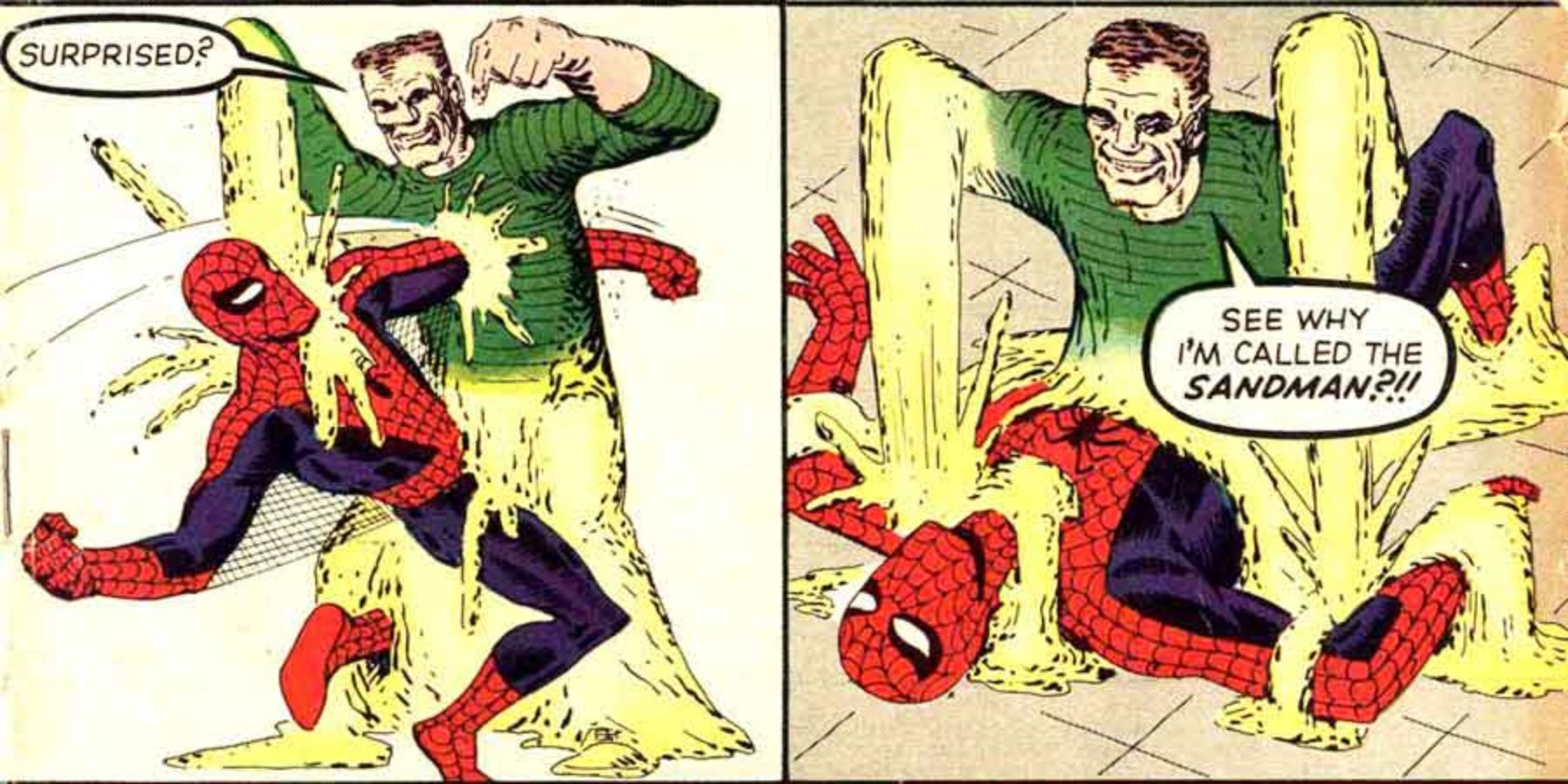With the release of Spider-Man: No Way Home drawing closer every day, there’s no better time to look back on the amazing web-head’s cinematic history. And out of all the things that make the Spider-Man movies so memorable, one of their most iconic aspects is their colorful cast of villains.
Spider-Man has one of the most iconic bad guy lineups in superhero history, and one needs only look at his movies as evidence. Every single one of Spidey’s solo films has introduced a new member of his rogues’ gallery, from Green Goblin and Doctor Octopus to Vulture and Mysterio. Even the more divisive entries have produced memorable portrayals of some of the wallcrawler’s comic book foes — just look at Spider-Man 3, for instance.
The third entry in director Sam Raimi’s Spider-Man trilogy is by far the most controversial. Even the most devout spider-fans are likely to agree that the film is a poorly-paced, tonally inconsistent mess of a story, overstuffed with too many conflicting plotlines. However, there’s one specific character in Spider-Man 3 who manages to transcend the rest of the film, becoming arguably the very best thing about. That character is none other than Flint Marko, better known as the Sandman, played by Thomas Haden Church.
Sandman’s Secret Origin
First appearing in Amazing Spider-Man #4 by Stan Lee and Steve Ditko, Sandman was one of Spider-Man’s earliest foes. Unlike evil masterminds like Doc Ock, Green Goblin, or Mysterio, Sandman has always been depicted as a blue-collar criminal — instead of hatching elaborate schemes for power and glory, he’s always preferred to use brute force in pursuit of ill-gotten wealth. Throughout the 1960s, Sandman clashed with Spider-Man, the Fantastic Four, and even the Hulk. But over time, his characterization began to change.
In 1972’s Marvel Team-Up #1, written by Roy Thomas and drawn by Ross Andru, a new layer is added to Sandman’s characterization. After chasing Sandman all over Manhattan, Spider-Man and the Human Torch find out that the villain was just visiting his sickly mother for Christmas Eve. This issue established that Sandman was more than just a superpowered bruiser — he was also capable of love and compassion. Later comics would make Sandman even more sympathetic, until he quit villainy altogether and became a hero, even briefly joining the Avengers in the 90s. He’s gone back to being a villain since then, but the interpretation of Sandman as a sympathetic villain stuck.
A Different Kind of Villain
In Spider-Man 3, Flint Marko is depicted as a remorseful, vulnerable man, who only ever turned to crime to support his ailing daughter. As he himself says, “I’m not a bad person. I just had bad luck.” He desperately wants a normal life with his wife and daughter, but his criminal past has cursed him to live as an outcast. Flint’s sense of isolation is only amplified when a freak accident transforms him into a being of living sand, thus creating the Sandman.
The scene where Flint awakens with his newfound powers is without a doubt the most impactful moment in the entire movie. In a film that’s otherwise filled with campy dialogue and lighthearted humor, the birth of Sandman is a tragic, poignant sequence conveyed without a single spoken word. Flint regains consciousness within the sand, struggling to maintain humanoid shape as he slowly comes to grips with his new form. Flint sees his locket containing a photo of his daughter and reaches out for it, only for his hand to dissolve into sand. Steeling his resolve, Flint reaches out again, solidifying his hand enough to hold the locket. As he looks down at the picture of his beloved daughter, Flint finds the strength to rise up and walk, regaining human form as he advances with grim determination. This is a man who will save his daughter, no matter what it takes.
Thomas Haden Church’s performance perfectly sells this characterization of Sandman as a sympathetic antagonist. Unlike Green Goblin, Doc Ock, or Venom, he doesn’t embrace his villainy with over-the-top theatrics. He isn’t a supervillain, he’s an ordinary man driven to do terrible things out of desperation. And while he’s shown to be responsible for the death of Ben Parker, it’s revealed to be an accidental killing — one that haunts Flint throughout the film. In his final conversation with Peter, Flint bares his soul in a deeply vulnerable confession, proving that he’s been haunted by guilt over Ben’s death just as Peter has. At that moment, Peter sees himself in Flint, and chooses to forgive his uncle’s killer. And in doing so, he forgives himself as well, finally letting go of the guilt that’s tormented him throughout the trilogy.
The Soul of Sandman
Both Willem Dafoe’s Green Goblin and Alfred Molina’s Doctor Octopus are also framed as sympathetic to an extent in their respective films. However, the attempts at humanizing them clash with their otherwise ruthlessly cruel characterization. Meanwhile, Sandman avoids this problem by being consistently presented as a tragic figure throughout the film, never once lapsing into traditional supervillainy. Flint Marko isn’t evil, he’s just a lonely man with a guilty conscience who’s trapped by unfair circumstances. And through a combination of Sam Raimi’s directing and Thomas Haden Church’s brilliant performance, this vision of Sandman is brought to life with all the nuance and humanity it deserves.
With Spider-Man: No Way Home fast approaching, Sandman is a major contender to make a triumphant return to the big screen along with his fellow Raimi Trilogy villains Otto and Norman. However, there’s currently no confirmation on whether Thomas Haden Church will reprise his role as Flint Marko. But either way, Church’s heart-wrenching performance as Sandman has cemented him as a strong contender for the best villain in Spider-Man movie history — and arguably all of Marvel movie history as well.




